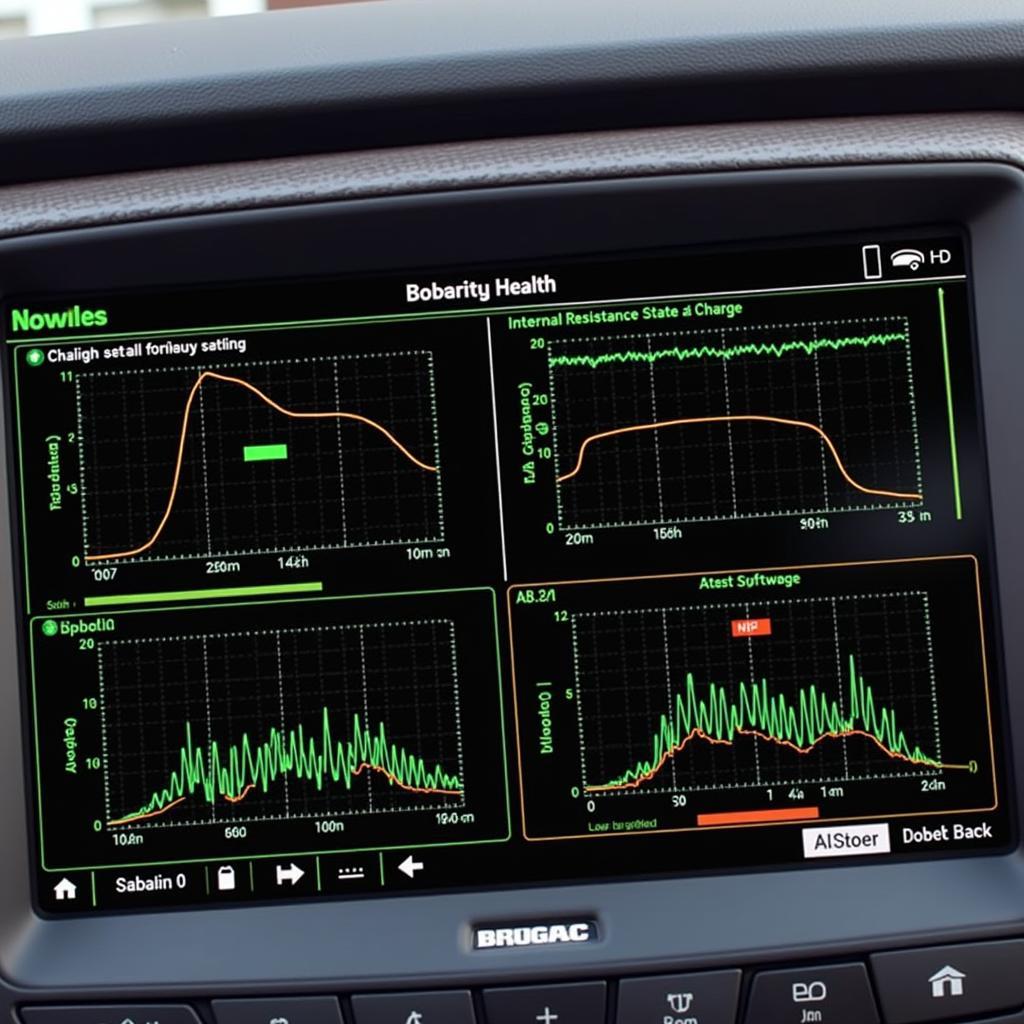A battery configuration car diagnostic tool is essential for any mechanic working on modern European vehicles like Audi, BMW, VW, and Citroen. These tools allow technicians to register a new battery, reset battery adaptation values, and diagnose battery-related issues. Without the correct battery configuration, these sophisticated vehicles can experience malfunctions and decreased performance.
Why is Battery Configuration Necessary?
Modern vehicles rely heavily on their electrical systems, and the battery is at the heart of it all. These vehicles utilize complex power management systems to optimize battery life and performance. When a battery is replaced, the vehicle’s computer needs to be informed of the change. This is where a battery configuration car diagnostic tool comes in. This procedure is critical for ensuring the car’s charging system functions correctly and the new battery is managed efficiently. Failing to register a new battery can lead to overcharging or undercharging, significantly reducing the battery’s lifespan and potentially causing damage to other electrical components.
Choosing the Right Battery Configuration Car Diagnostic Tool
Selecting the right tool is crucial for effective battery management and diagnosis. There are many different tools available, ranging from basic code readers to advanced diagnostic scanners. For working with Audi, BMW, VW, and Citroen, a tool that supports these specific makes is essential. Look for tools that offer comprehensive battery management functions, including battery registration, adaptation reset, and diagnostic capabilities. Some key features to consider include: compatibility with various battery types (AGM, EFB, Lead-Acid), ability to read and clear battery-related fault codes, and support for different communication protocols used by these European car manufacturers.  Best Diagnostic Tools for Battery Configuration in European Cars
Best Diagnostic Tools for Battery Configuration in European Cars
How to Use a Battery Configuration Car Diagnostic Tool
The process generally involves connecting the tool to the vehicle’s OBD-II port, selecting the battery registration function, and entering the new battery’s information. This information typically includes the battery’s amperage-hour (Ah) rating, part number, and sometimes the date of manufacture. The tool then communicates with the vehicle’s control modules to update the battery information.
What information do I need for battery configuration?
You’ll typically need the new battery’s Ah rating, part number, and sometimes the date of manufacture.
What if I don’t configure the new battery?
Failing to register a new battery can lead to premature battery failure and potential damage to other electrical components.
Benefits of Using a Dedicated Tool
Using a dedicated battery configuration tool offers several advantages. These tools ensure the vehicle’s power management system is correctly calibrated for the new battery, leading to optimal battery life and performance. They also allow for accurate diagnosis of battery-related problems, saving time and preventing unnecessary part replacements.
“Proper battery configuration is not just a recommendation, it’s a necessity for modern vehicles,” says Dr. Andreas Bauer, a leading automotive electronics expert. “Ignoring this step can lead to a cascade of electrical problems and significantly shorten the lifespan of the new battery.”
Beyond Basic Configuration: Advanced Diagnostics
Some advanced diagnostic tools offer more than just basic battery configuration. They can perform in-depth battery health checks, analyze charging system performance, and identify potential issues within the electrical system. This allows for proactive maintenance and prevents unexpected breakdowns.  Advanced Battery Diagnostics in European Cars
Advanced Battery Diagnostics in European Cars
Battery Configuration Car Diagnostic Tool for Audi, BMW, VW, Citroen: Conclusion
Investing in a quality battery configuration car diagnostic tool is essential for any workshop specializing in European vehicles. These tools provide the necessary functionality for proper battery management, extending battery life, and ensuring optimal vehicle performance. Accurate battery configuration is vital for the health and longevity of modern vehicles like Audi, BMW, VW, and Citroen.
FAQ
- What is battery configuration? Battery configuration is the process of registering a new battery with the vehicle’s computer system.
- Why is it important? It ensures proper charging and power management.
- What tools do I need? A specialized car diagnostic tool compatible with your vehicle’s make and model.
- What information is needed for configuration? The battery’s Ah rating, part number, and possibly the date of manufacture.
- Can I configure the battery myself? Yes, with the right tool and information.
- What happens if I don’t configure the battery? It can lead to reduced battery life and potential electrical issues.
- Where can I find a reliable diagnostic tool? Check reputable online retailers or automotive supply stores.
“By correctly configuring the battery, you’re not just extending its lifespan, you’re protecting the entire electrical system,” adds Dr. Bauer. “A small investment in the right tools can save you significant costs in the long run.”
For assistance or to purchase the latest diagnostic tools, please contact us via WhatsApp: +1(641)206-8880, Email: [email protected] or visit our office at 910 Cedar Lane, Chicago, IL 60605, USA. Our customer service team is available 24/7. You can also explore more articles and resources on our website to learn more about car diagnostics and maintenance.

Leave a Reply